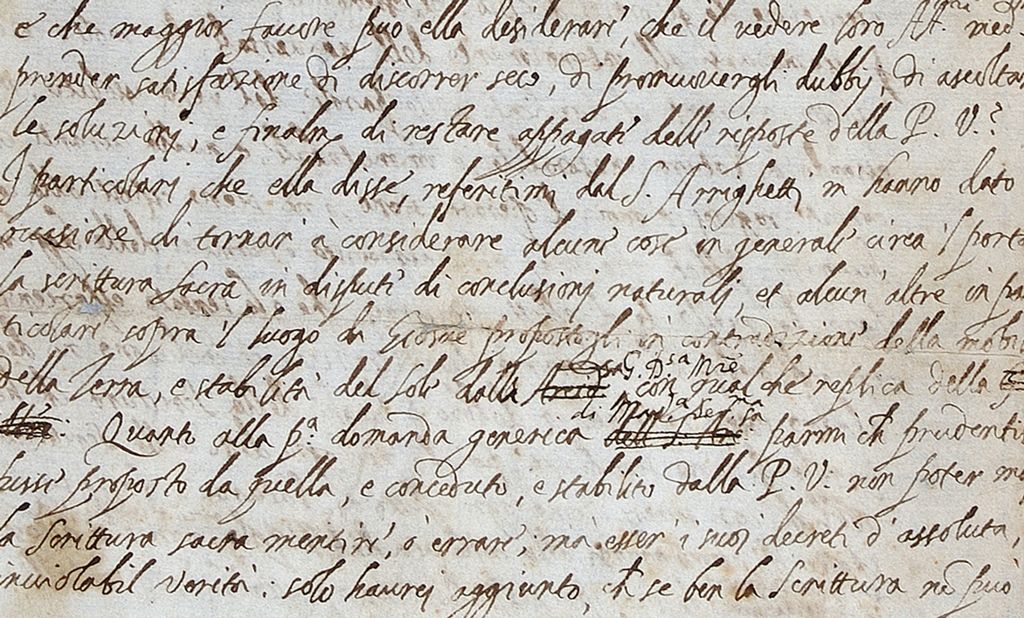Document shows that the astronomer toned down the claims that triggered science history’s most infamous battle — then lied about his edits, says Alison Abbott in the “Nature” magazine.
It had been hiding in plain sight. The original letter — long thought lost — in which Galileo Galilei first set down his arguments against the church’s doctrine that the Sun orbits the Earth has been discovered in a misdated library catalogue in London. Its unearthing and analysis expose critical new details about the saga that led to the astronomer’s condemnation for heresy in 1633.

The seven-page letter, written to a friend on 21 December 1613 and signed “G.G.”, provides the strongest evidence yet that, at the start of his battle with the religious authorities, Galileo actively engaged in damage control and tried to spread a toned-down version of his claims.
Many copies of the letter were made, and two differing versions exist — one that was sent to the Inquisition in Rome and another with less inflammatory language. But because the original letter was assumed to be lost, it wasn’t clear whether incensed clergymen had doctored the letter to strengthen their case for heresy — something Galileo complained about to friends — or whether Galileo wrote the strong version, then decided to soften his own words.
Galileo did the editing, it seems. The newly unearthed letter is dotted with scorings-out and amendments — and handwriting analysis suggests that Galileo wrote it. He shared a copy of this softened version with a friend, claiming it was his original, and urged him to send it to the Vatican.
The letter has been in the Royal Society’s possession for at least 250 years, but escaped the notice of historians. It was rediscovered in the library there by Salvatore Ricciardo, a postdoctoral science historian at the University of Bergamo in Italy, who visited on 2 August for a different purpose, and then browsed the online catalogue.
“I thought, ‘I can’t believe that I have discovered the letter that virtually all Galileo scholars thought to be hopelessly lost,’” says Ricciardo. “It seemed even more incredible because the letter was not in an obscure library, but in the Royal Society library.”
Ricciardo, together with his supervisor Franco Giudice at the University of Bergamo and science historian Michele Camerota of the University of Cagliari, describe the letter’s details and implications in an article in press at the Royal Society journal Notes and Records. Some science historians declined to comment on the finding before they had scrutinized the article. But Allan Chapman, a science historian at the University of Oxford, UK, and president of the Society for the History of Astronomy, says “it’s so valuable — it will allow new insights into this critical period”.
The original study can be downloaded from the Nature magazine.


